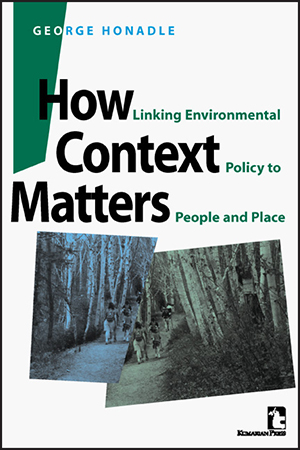
- 2000/222 pages
- A Kumarian Press Book
How Context Matters:
Linking Environmental Policy to People and Place
Paperback: $24.95
ISBN: 978-1-56549-104-5
Presenting a unique method of looking at environmental policy formulation and implementation, George Honadle clarifies those elements of context that affect how policies work and outlines policymaking approaches that incorporate the important linkages among public policies, human behavior, and natural settings.







